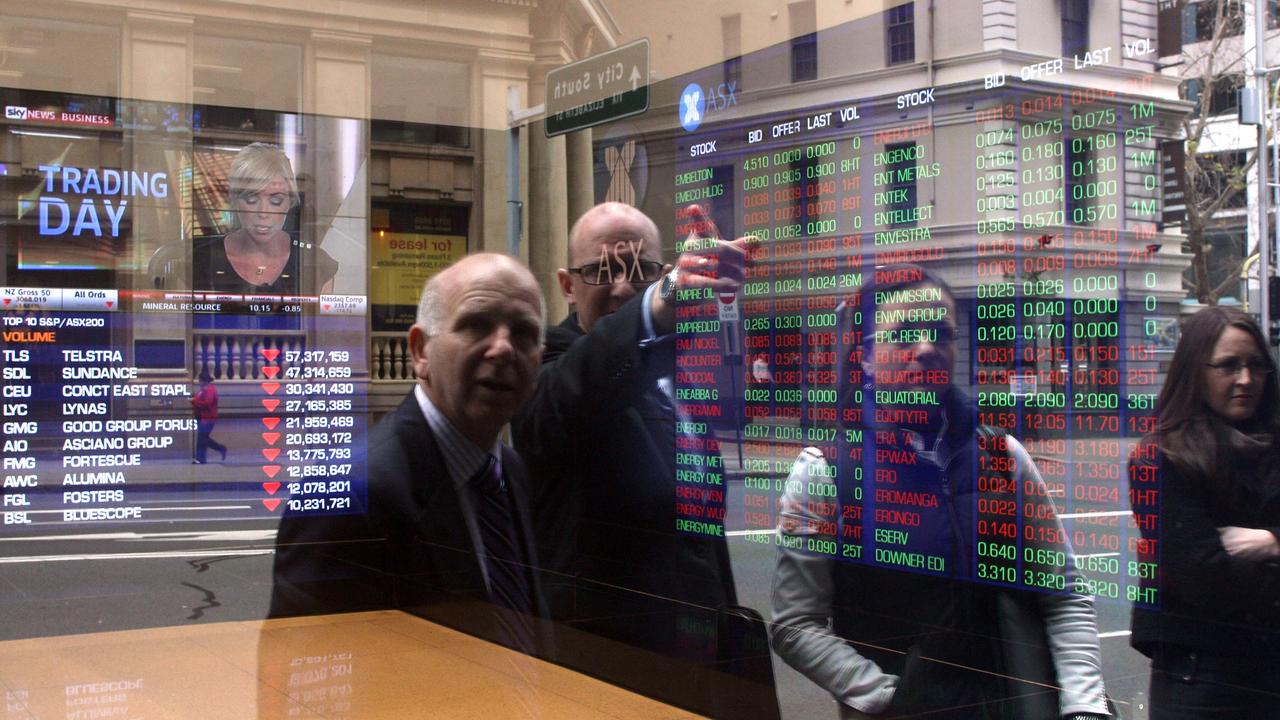Woolworths looking to bounce off canvas
It’s hard to tell whether Woolies has employed a ‘rope a dope’ tactic or whether the retailer is down for the count.

It’s hard to tell whether Woolies has employed a “rope a dope” tactic in deference to Muhammad Ali, or whether the punch-drunk retailer really is down for the count.
Our view is the grocer is still the biggest — it used to be the greatest — in the land and it’s hard to keep a gorilla on the mat for too long.
There are nascent signs of Woolies regaining its footwork, but whether this stretches to a whole bout remains to be seen.
Credit Suisse veteran retail analyst Craig Saligari describes Woolies as “highly strategy dependent”: the retailer can’t rely on upstart Aldi losing steam or Wesfarmers’ Coles slipping on a banana peel in aisle nine.
The old-style barns — one-stop shops with vast grocery lines — are on the wane as shoppers become more comfortable visiting multiple venues more often.
Credit Suisse expects the “middle market” — which has grown since the turn of the century — to decline in favour of limited assorted discount (lad) or limited assortment premium (laps) outlets.
“It is not clear how cognisant Woolworths is of a ‘smaller middle’ scenario,’’ the firm says. “Its supermarket vision may become more apparent to outsiders when its first renewal formats open in the second half of 2016.’’
Meanwhile, Morgan Stanley notes that Woolies’ “out of stock” items are running at 4-5 per cent of the range total sales, which should be remedied with a new IT rollout.
Staff turnover is running at 18-20 per cent, with only 30 per cent of store managers at the same store compared with a year before. Five-fingered discounting remains rife, with “shrinkage” rates growing by as much as 100 basis points.
At least these woes are so abysmal they’re easily fixable.
Woolies is a long-term buy, but unlike its merchandise it’s hardly a steal.
Mesoblast (MSB) $1.92 (shares suspended)
Radio silence yesterday enveloped the stem cell developer amid a voluntary share suspension, adding weight to the naysayers’ view that an ominous announcement is afoot.
Mesoblast on Friday requested the freeze “in respect to material corporate developments with respect to certain assets of the company’’.
Parties close to the Nasdaq-listed company reckon it’s more likely good news about a partnering deal with one or more of its therapies, which would inject much-needed funds.
Others are far less sanguine.
Curiously, Osiris Therapeutics of the US in late May confessed that it was subject to a criminal investigation by the US Attorneys Office over accounting practices.
The link here is that in 2013 Osiris sold its stem cell platform to Mesoblast for $US50 million ($68m) in cash and scrip, plus up to another $US50m in clinical and regulatory milestones.
The bigger fear is that Teva Pharmaceuticals of the US has decided to withdraw from funding collaboration to develop Mesoblast’s technology for chronic heart failure.
According to Lodge Partners, Teva has not been obliged to fund the program since an interim analysis was completed late last year, “but continues to do so’’.
Another theory relates to shareholder Celgene, which had a first right of refusal over several of Mesoblast’s programs but declined to take it up.
Bell Potter analyst Tanushree Jain is leaning to a partnering or licensing deal, most likely a degenerative disc disease collaboration with a party with orthopedic expertise.
At the end of the March quarter, Mesoblast had $US100m of cash in the bank but cash burn of $US22m for the quarter, which implies enough readies to last for just over a year.
Mesoblast at one stage was worth well over $2 billion, but its shares have been smashed by slower than expected progress and last year’s poorly received Nasdaq listing.
Investors have little choice but to hold and pray for the best.
Heron Resources (HRR) 14.5c
Zinc is emerging from the waste pile of resources, having gained 38 per cent in value since the start of the year as a couple of key older mines become exhausted.
Aptly, Heron is hoping to fill the void with its own resources rubbish dump: the disused Woodlawn project near Canberra that houses much of Sydney’s detritus.
Heron yesterday said its $11m definite feasibility study on the zinc-copper venture was on track for release by the end of June, complete with an updated resource statement. “Woodlawn is perfectly placed to become a meaningful producer in the zinc market as early as 2018,’’ chimes CEO Wayne Taylor.
Zinc has recovered to US90c a pound but traded at $US1 a pound a year ago, when overblown hopes for the galvanising material failed to gain traction.
With cash of $25m, Heron has a story that’s more than rubbish. Spec buy.
The Australian accepts no responsibility for stock recommendations. Readers should contact a licensed financial adviser. The author owns Woolworths shares.



Woolworths (WOW) $21.81